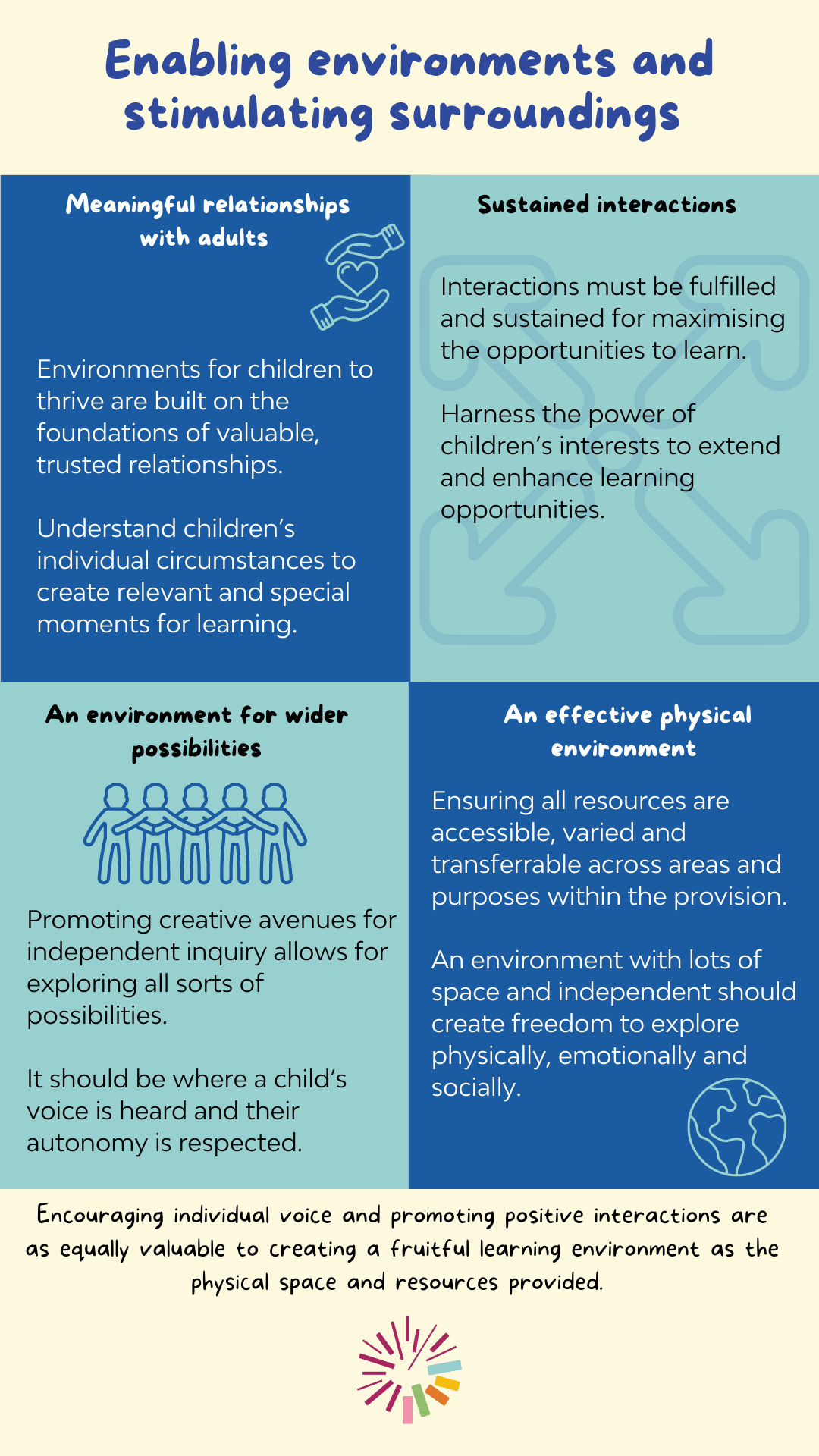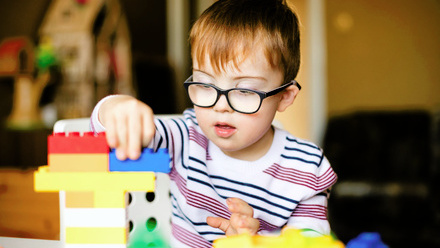Enabling environments and stimulating surroundings in early education and care
Enabling environments offer children security, comfort, engagement and opportunity. Children benefit from the opportunity to choose their own learning and enquiries through play when settings embrace free flow and choice as children move between activities and experiences, not simply from inside to outside.
Birth to Five Matters
Meaningful relationships with adults
Adults within early education and care settings play a key role in providing opportunities for enabling learning experiences and extending thinking.
This is built on the foundations of valuable, trusted relationships between children, adults and their families. Working in partnership with parents and carers to understand the individual needs and circumstances of a child’s wider life experiences all contribute to creating special moments between children and their key worker to support children through every aspect of their learning.
Sustained interactions
Interactions must be fulfilled and sustained for maximising the opportunities to learn. Child-led play opportunities offer a valuable insight into interests that can be used to extend learning opportunities by enhancing continuous provisions in new ways that pique engagement whilst drawing upon new skills.
An environment for wider possibilities
Another aspect of an enabling environment is that of a space that encourages inquiry and independent thinking. Allowing children to find their own opportunities, rather than signposting and shoehorning specific activities for obvious outcomes. Promoting this creative avenue to exploring all sorts of possibilities also supports a sense of belonging where a child’s voice is heard and their autonomy is respected.
An effective physical environment
How space is used within the provision should also be considered when looking at how enabling the environment is. Ensuring all resources are accessible, varied and transferrable across areas and purposes within the provision. An environment with lots of space and independent means should also be one that is emotionally enabling. Creating a culture that listens to everyone’s ideas not only develops respect for others but also a confidence to contribute, developing resilience through finding solutions to challenges.
Conclusions
Environments that stimulate children’s learning are not just about the space they interact in but relies on the professional conduct of the adults around them to create an engaging place for provocation and thought. Encouraging individual voice and promoting positive interactions are as equally valuable to creating a fruitful learning environment as the physical space and resources provided.







